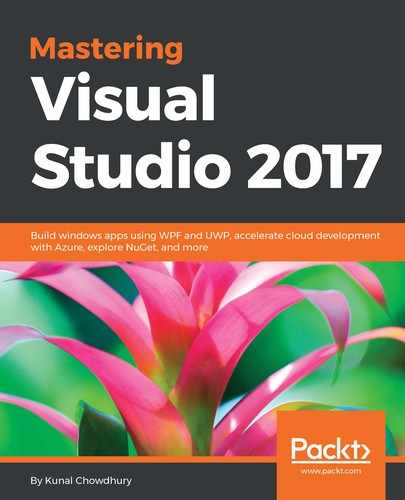We have already discussed that the Universal Windows Platform makes it easier to build apps with a single API set, create one binary package, and distribute it to one Store to reach millions of people using Windows 10 on all their devices, such as mobile, tablet, PC, laptop, Xbox, HoloLens, Surface, and more.
To get started with the UWP app development, you need the Windows 10 operating system as the host and Visual Studio 2015 Update 3 or Visual Studio 2017 as the editor with the UWP Tools/SDK. We are going to use Visual Studio 2017 IDE in this book to go through each code example.
Let's first take a look at how we can build apps for Windows 10. You can choose the traditional Windows desktop apps (called Classic Windows Apps) using WinForm, WPF (which is also XAML-based), and MFC with full .NET support. You can choose between a set of programming languages such as C#, VB.NET, C++, and others to build classic apps.
Then we have the UWP, which we discussed just now. Here, you can use C#, VB.NET, or C++ to build XAML-based Universal Windows apps. If you are a JavaScript lover, you can use HTML to design the UI. This type of application can be run across all Windows 10 devices. In this chapter, we are going to focus on this topic.
In case you are from other technologies, you can still build apps for Windows 10 using the Windows bridging technologies for iOS, Android, hosted web apps, Win32, and more. These bridges for Windows allow you to convert your existing apps to UWP so that you can enhance them with the new features and publish them to Windows Store to reach all devices running Windows 10. To know more about the Windows bridging technologies, check out this page: https://developer.microsoft.com/en-us/windows/bridges.
Here is a diagram that demonstrates this in a simple manner:

